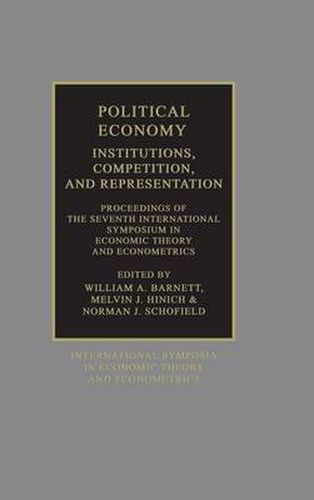Readings Newsletter
Become a Readings Member to make your shopping experience even easier.
Sign in or sign up for free!
You’re not far away from qualifying for FREE standard shipping within Australia
You’ve qualified for FREE standard shipping within Australia
The cart is loading…






The contents of this volume are drawn from the seventh International Symposium in Economic Theory and Econometrics, and represent recent advances in the development of concepts and methods in political economy. Contributors include leading practitioners working on formal, applied, and historical approaches to the subject. The collection will interest scholars in the fields of political science and political sociology no less than economics. Part I outlines relevant concepts in political economy, including implementation, community, ideology, and institutions. Part II covers theory and applications of the spatial model of voting. Part III considers the different characteristics that govern the behaviour of institutions, while Part IV analyses competition between political representatives. Part V is concerned with the way in which government acquires information held by voters or advisors, and Part VI addresses government choice on monetary policy and taxation.
$9.00 standard shipping within Australia
FREE standard shipping within Australia for orders over $100.00
Express & International shipping calculated at checkout
The contents of this volume are drawn from the seventh International Symposium in Economic Theory and Econometrics, and represent recent advances in the development of concepts and methods in political economy. Contributors include leading practitioners working on formal, applied, and historical approaches to the subject. The collection will interest scholars in the fields of political science and political sociology no less than economics. Part I outlines relevant concepts in political economy, including implementation, community, ideology, and institutions. Part II covers theory and applications of the spatial model of voting. Part III considers the different characteristics that govern the behaviour of institutions, while Part IV analyses competition between political representatives. Part V is concerned with the way in which government acquires information held by voters or advisors, and Part VI addresses government choice on monetary policy and taxation.